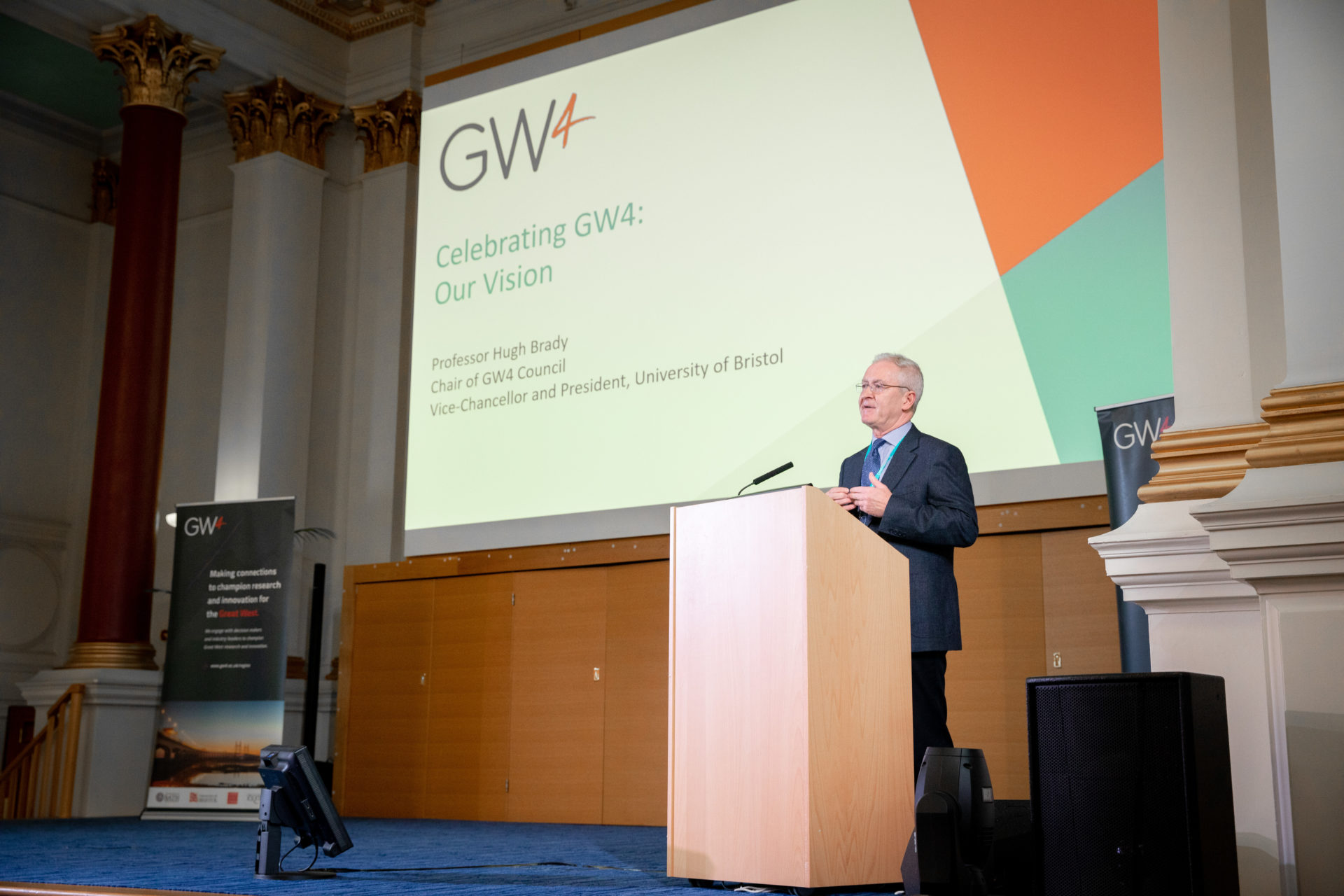In the last few years the GW4 Alliance has appointed its first Director and more recently celebrated its 5-year anniversary. Professor Hugh Brady, President and Vice-Chancellor of the University of Bristol, reflects on his two-year term as Chair of the GW4 Council, including the dynamic developments the Alliance has made and future vibrant opportunities.
As I hand the over the baton of Chair of GW4 Council from Bristol to Exeter, it provides an opportunity to reflect on what an ambitious endeavour the GW4 Alliance was when initially formed in 2013, and formally launched at the House of Commons in October 2014. Five years on, GW4 is not just a wonderful success for our region but a shining example of what research-intensive collaboration looks like for the UK and for the world. GW4 remains the only research Alliance to collaborate across England and a devolved administration bringing together the research-intensive universities of Bath, Bristol, Cardiff and Exeter. To date, the Alliance has invested over £4.6million in research, training and world class facilities. GW4’s total external grant income across its collaborative research communities and doctoral training programmes is in excess of £125 million. Realising this scale of return on investment is truly outstanding and just one of the many markers of success for our partnership.
Each GW4 university has distinct research and innovation strengths, and by harnessing these we are developing new solutions and technologies to apply to some of society’s most pressing issues. Societies across the world face numerous challenges and the pace of change today is such that they need to be tackled by organisations like GW4, as the scale of response required goes beyond individual organisations or institutions.
I believe it is our responsibility as a globally competitive research consortium to tackle these challenges head on.
At GW4's 5-year anniversary event we announced our new strategic research areas in Climate and Anti-Microbial Resistance (AMR). GW4 researchers have already been influential in identifying climate change tipping points. When one includes the Met Office in Exeter, the GW4 region is home to one of the largest concentrations of climate expertise worldwide. By working more closely together, we have a wonderful opportunity to take the impact of our climate research to another level. The same is true in the field of AMR where we have complementary expertise and a great opportunity to build scale and impact through collaboration. It is timely that the theme for our GW4 Crucible 2020 is 'Interdisciplinary Approaches to Tackling AMR'.
GW4 provides us a unique opportunity through collaboration and partnership to compete with the very best universities in the world and attracts the very best talent from across the world. GW4 hosts over 30 Doctoral Training Programmes and supports doctoral students in a unique research-intensive innovative environment.
Through collaboration, GW4 can build research communities with impact and develop strong partnerships at scale. In December 2019, we announced funding for a new GW4 Generator Award and I look forward to seeing the research developments of these communities. To date the GW4 Alliance has invested over £2.8m in 87 collaborative research communities, which are addressing major global and industrial challenges and have generated nearly £40 million in research income.
For example, VSimulators, a world class national research facility at the universities of Bath and Exeter, started out as a GW4 research community. VSimulators provides a unique capability to physically and virtually recreate different environments to measure the impact of vibrations of very tall buildings, bridges and floors on people’s health and well-being. Our communities also influence policy, from the gender pay gap to regional business responses to Brexit.
GW4 enables shared access to cutting-edge equipment and facilities to drive scientific discovery. We invest in major flagship centres of excellence, which put the region on the map and catalyse collaboration between GW4 researchers and beyond. For example, the GW4 Facility for High Resolution Cryo-Microscopy provides researchers across the region with a suite of state-of-the-art microscopy and analysis tools. GW4 researchers can also access the Pre-clinical In-vivo Functional Imaging facilities across the institutions, which we look to build on in clinical setting, including a Micro PET/CT scanner based in Cardiff’s PETIC facility and a 3T large animal MRI scanner based in Bristol’s Translational Biomedical Research Centre.
Our recent partnership with the National Trust combines our complementary expertise and skills to focus on five research themes including climate resilience, wellbeing and enhancing the audience experience. Multidisciplinary research teams will develop projects and research bids to help tackle these complex social and global challenges.
Last, but definitely not least, there is a really important role for our Alliance in amplifying the civic university voice so that we can more proactively and productively shape important agendas within our cities and our region. GW4 has enabled us to work together to enhance the regional innovation and enterprise ecosystems so that we can better support SMEs and offer more substantive partnerships to the major industry players in our region.







